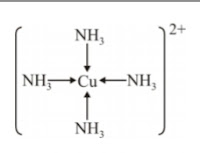As all gases behave the same way with respect to pressure, volume, and temperature, if the amount is measured per mole, then the ideal gas expression itself can be written as a ratio useful in the events like when temperature, volume, and pressure of a fixed amount of gas vary from (T1, V1, P1 ) to (T2, V2, P2). For such an instance we can write,for the initial condition; 𝑛𝑅 =𝑃1𝑉1/𝑇1
for the final condition; 𝑛𝑅 =𝑃2𝑉2/𝑇2
𝑃1𝑉1/𝑇1=𝑃2𝑉2/𝑇2
Dalton law of partial pressure
In most practical applications we encounter a mixture of gases rather than a single gas. The air we breathe has nitrogen and oxygen gases as major components and a variety of other gases in minute quantities. All of these gases contribute to the total atmospheric pressure.
Also, the pressure that a constituent gas of a mixture of gases would exert if it alone occupies the volume of the mixture at same temperature is defined as the partial pressureof that gas. A postulate introduced by Dalton says that the total pressure exerted by the mixture of non-reactive gases is equal to the sum of the partial pressures of individualgases. This is known as “Dalton law of partial pressures”. Accordingly, if partial pressures of individual gases in a mixture of gases A, B and C are PA, PB and PC respectively, at constant temperature and constant volume the total pressurePT of the mixture is given by the following equation.
PT = PA + PB + PC
The Dalton law of partial pressure can be derived using ideal gas equation as follows. Consider a mixture of gases A and B with nA and nB moles, respectively exerting the total pressure of PT.
PV = nRT
For gas A, nA = PAV/ RT (PA is the partial pressure of gas A)
For gas B, nB= PBV/ RT (PB is the partial pressure of gas B)
For the mixture of gases, nT = PTV/ RTand nT = nA + nB
Therefore, PTV/ RT = (PAV/ RT) + (PBV/ RT)
Simplification gives , PT = PA + PB
This is the Dalton law of partial pressures.
Suppose at the temperature T, nA moles of gas A and nB moles of gas B, are enclosed in acontainer of volume V, then partial pressures exerted by gases A and B are PA and PBrespectively while the total pressure is PT.
Therefore, we can write, 𝑃𝐴 =𝑛𝐴 𝑅𝑇/𝑉
and 𝑃𝐵 =𝑛𝐵 𝑅𝑇/𝑉
According to Dalton law, 𝑃𝑇 = 𝑃𝐴 + 𝑃𝐵
Substituting from the above, 𝑃𝑇 =𝑛𝐴𝑅𝑇/𝑉+𝑛𝐵 𝑅𝑇/𝑉
= ( 𝑛𝐴 + 𝑛𝐵)𝑅𝑇/𝑉
Dividing the expressions for 𝑃𝐴 and 𝑃𝐵 separately by 𝑃𝑇, we get;
𝑃𝐴/P𝑇=[𝑛𝐴 𝑅𝑇/𝑉]/( 𝑛𝐴 + 𝑛𝐵) 𝑅𝑇/𝑉
=𝑛𝐴/( 𝑛𝐴 + 𝑛𝐵)= 𝑥𝐴 this is the mole fraction of A
Likewise,
𝑃𝐵/𝑃𝑇=[𝑛𝐵 𝑅𝑇/𝑉]/( 𝑛𝐴 + 𝑛𝐵) 𝑅𝑇/𝑉
=𝑛𝐵/( 𝑛𝐴 + 𝑛𝐵)= 𝑥𝐵 : this is the mole fraction of B
Therefore, we can write,
𝑃𝐴 = 𝑥𝐴 𝑃𝑇 and 𝑃𝐵 = 𝑥𝐵 𝑃𝑇
Partial pressure of the constituent gas is equal to the product of total pressure and mole fraction of the gas.
We apply our knowledge on Dalton law for a mixture of gases assuming that they have the same properties as pure gases, provided that all gases in the mixture are ideal gases thus do not react chemically with each other. However, in practical situations such as chemical reactions involving gases, the procedure used to collect may introduce another gas. For example, a technique often used to collect gases from a chemical reaction is the displacement of water from an inverted container. In this method, a gas is collected in the container by bubbling the gas through a tube into a gas jar filled with water which is placed upside-down in a water trough. So that the gas push all the liquid out from the bottle when it is collected. Here, we assume that the gas does not dissolve in water and does not react with water. However; we do not get the gas which is in the pure state. Instead, the collected gas is a mixture of the gas generated by the reaction and some water vapour formed from evaporation. The amount of water vapour contained in the gas is most readily measured by the pressure it exerts at that temperature, called the saturated vapour pressure. Therefore, to determine the pressure exerted by a gas collected in thisway at a specific temperature, it is necessary to subtract the vapour pressure of water from the total pressure of the mixture. Then from the partial pressure of the gas and its volume and temperature, the ideal gas law can be used to calculate the amount of the gas collected.
This video is taken from youtube from the channel







































